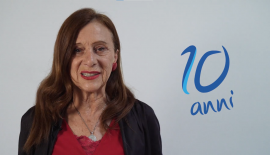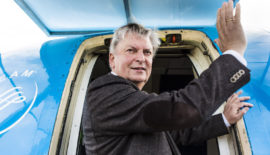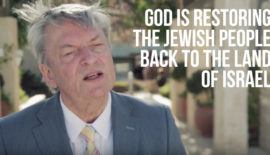Otto Freundlich (1878-1943) Biography
![]()
He is a German painter and sculptor. Otto Freundlich was born in Stolp, in the province of Pomerania, Prussia, into a Jewish family. His mother is a first cousin of the writer Samuel Lublinski. After interrupting his philosophy studies in Munich between 1903 and 1904, he undertook a trip to Florence in 1905. He returned to Florence in 1906 and worked here for some time in his own studio as a sculptor. The months spent in Italy are decisive for his choice of life because here he discovers that what he wants to do is not family business, nor even to continue his studies in dentistry, but art is his life’s purpose. In 1908, he went to Paris and was welcomed by Rudolf Lévy, also from Germany. Otto lived for a year at the Bateau-Lavoir in Montmartre, before moving to Montparnasse. Here he met Picasso, Georges Braque, Juan Gris, André Salmon and Guillaume Apollinaire at the cabaret Lapin Agile in Montmartre. In Paris, Freundlich was able to make contacts with intellectuals and awakening artists who brought new revelations and inspiration to his art. He returned to Germany at the beginning of 1910 and decided to leave Munich for Berlin, where he never felt at home and where he only had a few contacts. In Berlin, he succeeded in having his own studio and in 1910 joined the ‘Berliner’ artists’ groups. Secession’ and ‘Neue Berliner Sezession’ and in 1911 he produced his first abstract paintings. He often travelled to Paris and in 1912 he met Brancusi, Modigliani et Amadeo de Souza Cardoso, and in November of the same year he began sculpting the Grande Tête, (the Great Head) infamously made famous as Der neue Mensch (the New Man), the name given by the Nazi regime for the Entarte Kunst exhibition. In 1914 Freundlich travelled to Chartres, this stay in France marked a profound caesura in his work. Here the artist moved away from Expressionism and Art Nouveau, that had dominated his early work, and turned towards the abstract. Likewise, the experience of the war and the Russian Revolution led Freundlich to a strong politicisation of his works and he developed his concept of Cosmic Communism. In 1917, he worked for the pacifist magazine Die Aktion, which dedicated a special issue to him in September 1918. Otto Freundlich is passionate about creating stained glass windows, tapestries and mosaics in various artistic fields. Freundlich then joined the Cercle et Carré (Circle and Square) group, founded by Michel Seuphor. In 1918, the artist began work on the mosaic: The Birth of Man commissioned by Feinhals and executed by Heinersdorff in the workshops of Puhl & Wagner. After the First World War, he began his activities in politics as a member of the November Group. In 1919, he organised the first Dada exhibition in Cologne with Max Ernst and Johannes Theodor Baargeld. In 1920, Walter Gropius insisted on hiring Freundlich as a professor at the Bauhaus, but the school board rejected his application. In October 1921, Walter Benjamin invited him to participate in his project to found the magazine Angelus Novus. On 11 March, Freundlich organised the important conference ‘Transformation du monde visible’ (Transformation of the visible world). He is extremely active and fights for his ideas. At the International Congress of Progressive Artists, he attacked the art world and artists’ associations with force and determination. In May 1928 he began his sculpture, Ascension, which he finished in the summer of 1929 and exhibited at the exhibition Abstrakte Kunst und Surrealismus at the Kunsthaus Zurich. In 1930 he met the painter and sculptor Jeanne Kosnick-Kloss (1892-1966), who became his life and art partner. Otto and Jeanne create mosaics, sculptures and tapestries together. In 1934, Otto wrote a theoretical text on painting: Die Wege der Abstrakten (The Ways of Abstract Art). In 1936, he founded the private academy Le Mur (The Wall) in Paris, rue Denfert-Rochereau and with Jeanne Kosnick-Kloss were among the art teachers. In July 1937, the Entartete Kunst – Degenerate Art exhibition curated by the Nazi regime’s artist Adolf Ziegler was staged in Munich at the Institute of Archaeology in the Hofgarten. Freundlich’s Big Head is used for the cover of the exhibition catalogue, but its title is changed to Der neue Mensch, or The New Man, referring in a negative sense to Otto Freundlich’s theories behind art and society. The sculpture was mocked by many artists and critics, both because of the Jewish origins of its author and because of the facial features depicted. There are no traces left of the Great Head; it was most probably destroyed by the Nazis. Freundlich’s other works were also seized from the collections of public museums throughout Germany by order of the Nazis. Otto Freundlich was in Paris in 1938, living in poverty due to the Nazi regime. In his new home, the Jeanne Bucher Gallery organised an exhibition of his works on the occasion of his 60th birthday. More than 20 friends and fellow artists sign an appeal to the French government to buy two works for the National Museum of Modern Art in order to support the artist, who is in severe financial difficulty. When war broke out, Freundlich, a German national, was arrested by the French army and interned in Francillon. In February 1940, he was transferred to Bassens in the Gironde region. Freundlich was released in May and took refuge in Saint-Paul-de-Fenouillet with his wife in the eastern Pyrenees. Denounced and arrested on 23 February 1943 for his Jewish origins, Otto Freundlich was deported to Poland. On 9 March 1943, he was murdered by the Nazis directly on arrival at the Lublin-Majdanek camp.




